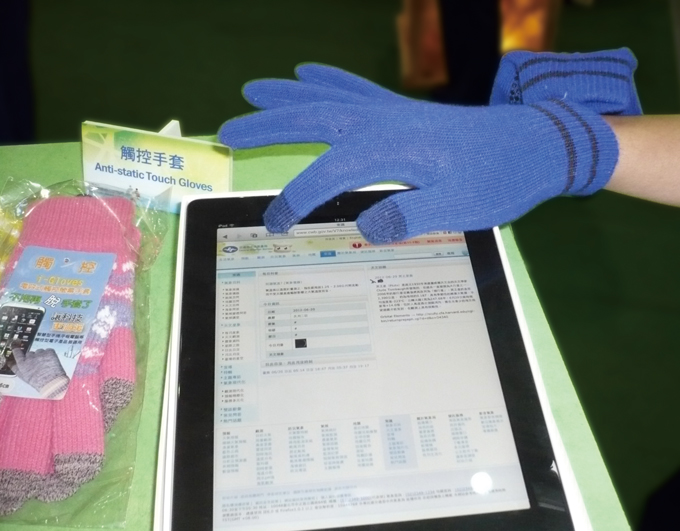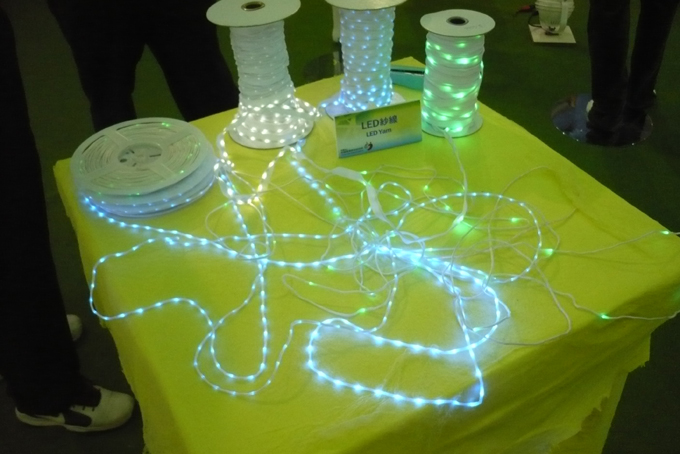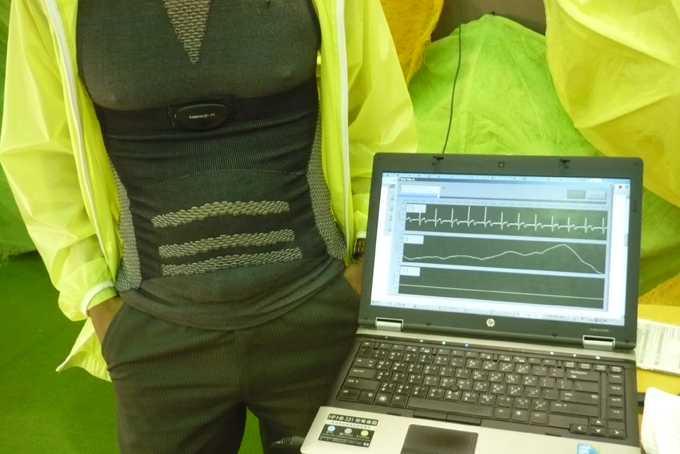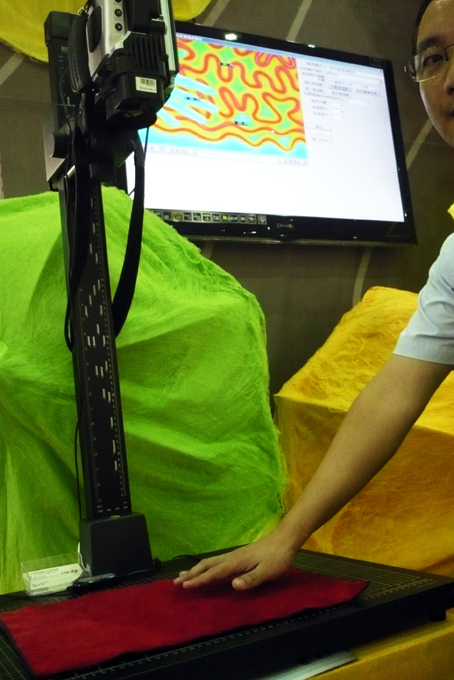LED Lighting Taiwan 2012 Spotlights Taiwan’s e-Tech Textiles
A smart vest measures pulse and blood pressure
2012/10/11 | By Ken LiuAn impressive showing at the LED Lighting Taiwan 2012 was by the government-backed Taiwan Textile Research Institute (TTRI), which displayed several textile products integrated with electronic technologies at the June trade show.
Some of the lifestyle-improving products included capacitive touchscreen gloves, vests wirelessly connected to mobile devices to detect heart rates, electrical blankets woven with flexible metal conduits and LED yarns.
The gloves allow users to operate PDAs as smartphones and tablet PCs on touchscreens without removing gloves in cold winters, with finger-integrated electrocondutive fibers enabling such convenience. A TTRI sales rep said carbon fiber, alternative to metal fibers, is used as conductive material.

“Electroconductive fibers are mostly used to make uniforms for the petrochemical industry for being able to discharge static electricity, which can trigger sparks to cause fire. So the textile industry of some economies has applied the fibers to touchscreen gloves to create another market,” the sales rep says.
Peaking in 2012
Two years ago, the TTRI introduced and transferred the touchscreen glove technology to the private sector, predicting the global market of touchscreen gloves to peak this year in light of brisk development of the global market for smart mobile devices.
The LEDs woven in the 2.5mm-diameter yarns are powered by 3-volt batteries, giving off light in darkness as warning light or entertainment. Unlike typical garments that light up, the LED-woven yarns are powered by low-voltage cell instead of relying on phosphorescence, which emits light after absorbing photons and hence are short-lived.

According to TTRI, the yarns are also sewn on parachutes, caps, backpacks, seat cushions, garments and airplane carpets.
The pulse-measuring vests send such data to mobile devices as laptops and wrist watches. A strip of metal on the vest is crucial to the wireless connection for electrical conductance, which powers electronic devices including the data transmitter on the vest.
Connected to a 3-volt battery, the metal fiber, insulated in PU to prevent shocking, conducts power to the transmitter. The vest is of PET-nylon blend to be elastic, ventilated and water-resistant.

According to the chief of TTRI’s system development section, C.L. Shen, textiles integrated with PC and wireless technologies brim of potential with compound annual growth rate estimated at 34%. “Electronic-integrated textiles may be the epitome of textile electrification in which metal fiber is crucial. All electronic gadgets use electricity and metal is an ideal conductor,” Shen stresses.
10 Years in the Making
Around 10 years ago, the institute started developing electroconductive fiber in cooperation with the private sector, targeting workers handling highly inflammables who need clothes that can discharge static electricity.
The institute also has developed electric blankets featuring metallic fibers with excellent malleability, hence being able to be folded 180 degrees without breakage, which cannot be achieved with, according to Shen, the others.
Shen points out that these textile technologies the TTRI has developed at request of the Ministry of Economic Affairs are to help the island’s textile industry carve out valuable niches in a crowded market. “While Taiwan’s textile manufacturers transplanted production lines of conventional products to Vietnam some 10 years ago, these tech-integrated textile products have shown clear high added-value in comparison,” Shen says.

These TTRI technologies, protected by 30 to 40 patents, are used by the apparel, agricultural, automotive, medical and performing arts sectors. The manufacturers of these high-end textile products have stayed in Taiwan. “Local manufacturers collaborating with us develop high-end products to target global upscale markets,” Shen adds.
Taiwan has emerged in the past 10 years as a global production hub of these high-end textile products by using electronic technologies. “For instance, Taiwan contract supplies 70% of global functional materials featuring good elasticity, ventilation and weather resistance, making textiles a top-three export for Taiwan, says Shen.

